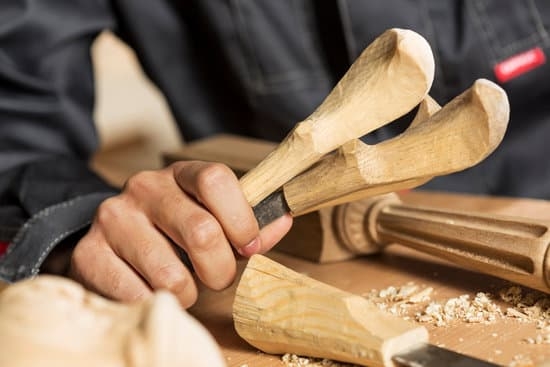Are you wondering, “how do I start woodworking?” Woodworking is a fulfilling and rewarding hobby that allows you to create unique pieces from scratch. Whether you are looking to dive into woodworking as a new hobby or wanting to explore it as a potential career path, this beginner’s guide will provide you with the essential information needed to start your woodworking journey.
Before diving into your first woodworking project, it is crucial to understand the basics of woodworking, including the essential tools needed, the types of wood suitable for different projects, basic techniques, and safety practices. This guide will walk you through each of these aspects step by step to ensure you have a solid foundation before beginning your woodworking endeavors.
By following this beginner’s guide, you will not only gain the necessary knowledge and skills to start woodworking but also learn how to troubleshoot common issues that may arise along the way. Additionally, we will provide resources and references for further learning so that you can continue to expand your knowledge and improve your woodworking skills as you progress in your journey. So, let’s embark on this exciting woodworking adventure together.
Essential Tools for Woodworking
Woodworking is an incredibly rewarding and fulfilling hobby or profession, but getting started can feel overwhelming, especially when it comes to choosing the right tools. As a beginner, it’s important to have a few essential tools in your arsenal to start your woodworking journey off on the right foot.
Basic Hand Tools
One of the first things you’ll need to consider when starting woodworking is investing in basic hand tools. Essential hand tools for woodworking include a set of chisels, a mallet, a handsaw, a try square, and a tape measure. These tools will allow you to make precise cuts and measurements as you begin working on your projects.
Power Tools
As you progress in your woodworking skills, you may want to invest in some power tools to make your work more efficient. Some basic power tools that are useful for beginners include a circular saw for making straight cuts, a jigsaw for cutting curves and intricate shapes, and a drill for making holes and driving screws. These power tools will help you complete projects faster and with more precision.
Sanding Tools
Another essential set of tools that every woodworker needs is sanding tools. Sandpaper in various grits, sanding blocks, and an electric sander are crucial for smoothing out rough edges and surfaces on your woodworking projects. Sanding is an important step in achieving a professional finish on your workpieces. With these essential tools in hand, you’ll be well-equipped to start woodworking and embark on your creative journey with confidence.
Selecting the Right Type of Wood for Your Projects
Selecting the right type of wood for your woodworking projects is a crucial step in ensuring the success of your creations. Different types of wood have unique characteristics that can affect the overall look, durability, and ease of working with them. Here are some tips to help you choose the best wood for your projects:
- Consider the project: The type of wood you choose should depend on the specific project you are working on. For example, hardwoods like oak, maple, and cherry are great for furniture-making due to their strength and durability, while softwoods like pine and cedar are better suited for outdoor projects due to their resistance to decay.
- Appearance: Take into consideration the appearance you want for your project. Some woods have beautiful grain patterns or colors that can enhance the visual appeal of your piece. Exotic woods like mahogany or teak are prized for their unique aesthetics.
- Workability: Different woods have different levels of hardness and ease of working with hand tools or power tools. Beginners may want to start with softer woods like pine or poplar before moving on to harder woods like oak or walnut.
Once you have selected the right type of wood for your project, it’s important to also consider factors such as cost, availability, sustainability, and environmental impact. By taking these factors into account, you can ensure that you not only create beautiful woodworking projects but also make informed choices as a responsible woodworker.
Basic Woodworking Techniques for Beginners
Woodworking can be both a rewarding and challenging hobby to undertake, especially for beginners. As you start your woodworking journey, it is essential to familiarize yourself with some basic techniques that will serve as a foundation for your projects. Here are some fundamental woodworking techniques that every beginner should learn:
Measuring and Marking
One of the first steps in any woodworking project is measuring and marking the wood accurately. Utilizing a tape measure, square ruler, and marking tools like pencils or markers are crucial in ensuring precise cuts and joinery. Learning how to measure correctly and mark your wood will greatly improve the overall quality of your projects.
Cutting Techniques
Understanding how to make accurate cuts with different tools such as saws, jigsaws, or circular saws is vital in woodworking. Take the time to practice making straight cuts, angled cuts, and curved cuts on scrap wood before proceeding to your actual project. Remember always to wear appropriate safety gear such as goggles and ear protection when using cutting tools.
Joinery Methods
Joinery refers to the methods used to connect pieces of wood together. Common joinery techniques for beginners include butt joints, pocket holes, dowels, and biscuit joints. Each method has its strengths and weaknesses depending on the project at hand. Experimenting with different joinery techniques will allow you to gain experience and improve your woodworking skills.
By mastering these basic woodworking techniques, you’ll be well-equipped to tackle a variety of projects as a beginner woodworker. Remember that practice makes perfect, so don’t get discouraged if your first few attempts are not flawless. With patience and dedication, you’ll soon progress from beginner projects to more complex woodworking creations.
Safety Tips and Practices in Woodworking
Woodworking is a rewarding and fulfilling hobby that allows you to create beautiful, functional pieces of furniture and decor. However, like any craft, it is important to prioritize safety when working with tools and materials. One of the first steps in embarking on your woodworking journey is understanding and implementing safety tips and practices to prevent accidents and injuries.
First and foremost, always wear the proper safety gear when woodworking. This includes safety goggles to protect your eyes from wood chips and sawdust, ear protection to safeguard your hearing from loud power tools, a dust mask to prevent inhalation of harmful particles, and sturdy work gloves to protect your hands from splinters and cuts. Additionally, ensure that your clothing is not loose-fitting or dangling which could get caught in moving machinery.
Another crucial aspect of woodworking safety is maintaining a clean and organized workspace. Cluttered work areas can increase the risk of accidents, as tools may be difficult to locate or tripping hazards may exist. Keep your workbench clear of unnecessary items, store tools properly when not in use, and sweep up sawdust regularly. By keeping a tidy workspace, you can minimize distractions and focus on your woodworking projects more effectively.
Lastly, always follow manufacturer instructions and guidelines for each tool you use in woodworking. Whether you are using a table saw, drill press, or hand tools such as chisels or planes, understanding how each tool operates and how to safely handle them is essential.
Take the time to familiarize yourself with the specific functions of each tool before using them on a project to avoid accidents or mishaps. Remember, safety should always be the top priority when beginning your woodworking journey.
Step-by-Step Guide to Building Your First Woodworking Project
Woodworking can be a fulfilling and rewarding hobby that allows you to create beautiful and functional pieces from scratch. But if you’re wondering, “How do I start woodworking?” don’t worry – we’ve got you covered with this step-by-step guide to building your first woodworking project.
The first step in starting your woodworking journey is to decide on a simple project that aligns with your skill level. Consider starting with something basic like a small shelf, a picture frame, or a wooden box. Once you have chosen your project, gather all the necessary materials and tools. If you’re unsure about what tools you need, refer back to the previous section on Essential Tools for Woodworking.
Next, it’s time to measure and cut your wood according to the specifications of your project. Remember the old adage: “measure twice, cut once.” Precision is key in woodworking, so take your time during this stage. After cutting your wood pieces, sand them down to smooth out any rough edges and surfaces.
This will ensure that your final product looks clean and professional. Assemble the pieces together using techniques such as glue, screws, nails, or joinery. Finally, add any finishing touches like staining or painting to complete your first woodworking project.
| Beginner Woodworking Project Ideas | Skill Level |
|---|---|
| Wooden Coasters | Beginner |
| Simple Bookshelf | Intermediate |
| Jewelry Box | Advanced |
Resources and References for Learning More About Woodworking
Woodworking is a craft that requires continuous learning and improvement. If you are asking yourself “how do I start woodworking?” and are looking to delve deeper into this hobby, there are plenty of resources available to guide you along the way. Here is a list of recommended resources and references for those who are eager to learn more about woodworking:
- //www.finewoodworking.com/”>Fine Woodworking: Known for its in-depth articles and expert advice on various woodworking topics, this publication is a must-read for anyone serious about honing their skills.
- READSeattle Woodworking Shop






